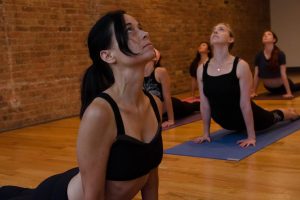
Physical fitness can affect academic performance, said Charles Hillman, a kinesiology and health professor at the University of Illinois at Urbana-Champaign, lecturing at the University of Chicago in December.
Recent experiments conducted on children from 3rd to 5th grades have shown that children and adults who are physically fit and maintain healthy diets perform better than those who are ‘unfit’—academically and beyond, said Hillman.
“There’s an increased prevalence of being overweight and unfit in this generation,” Hillman said. “The problem is that sedentary childhood leads to sedentary adulthood.”
Physical fitness is more necessary than people think, and according to Hillman, this generation may face shorter and unhealthier lives than previous generations.
Hillman said this is due to the rise in technology use that encourages sedentary activities, elimination of physical activities in school programs, parental upbringing and bad dietary choices.
“There were kids in the program that couldn’t name what broccoli was,” said Hillman.
Hillman said aerobic fitness has benefits beyond physical fitness in the area of cognitive improvement. According to Hillman, aerobic fitness increases the capability to take in and use a large amount of oxygen, and being able to breathe through different levels of physical activity is more important than just feeling the physical effects of the workout.
“That oxygen is distributed to your muscular and skeletal systems and is what supports your ability to move at a higher than average rate,” said Hillman. He added that oxygen distribution is what stimulates concentration and better academic performance.
Hillman’s research included 259 children between the ages of 8 and 10 in the Urbana school districts who were tested for muscle strength and flexibility. They were then given the Illinois Standardized Achievement Test. Observations showed that the better the children did in the physical capacity tests, the better they did on the ISAT, said Hillman.
Three out of four high school students are not engaged in the recommended amount of physical activity daily, according to Hillman, who recommended at least 45 minutes of physical exercise, five days a week for high school-aged students. For younger children, said Hillman, one hour of moderate periods of physical activity everyday is ideal.
Students may not be able to count on schools to help them stay active.
“Many schools are just teaching to test,” said Hillman. More schools are eliminating “non-academic” activities, failing to realize that the removal of programs such as sports and arts are hindering students academically, said Hillman.













Be First to Comment